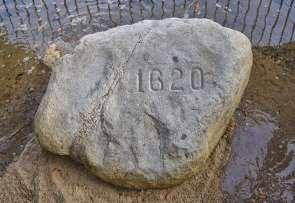
3 minute read
Angelo Tagliacozzo Scholarship 2021-2022 Status Update
By Kelly Weyer, CPG-11826 Scholarship Chairperson
Advertisement
In its 36th year, the annual Angelo Tagliacozzo Memorial Geological Scholarship process is right on schedule for the 2021-2022 award season! Student applications were due on December 9, 2021, and the applications are currently in the hands of the Scholarship Review Committee. The Review Committee’s evaluations are due on February 11, 2022. Once the individual evaluations are received and combined into a single composite evaluation score sheet, the Scholarship Review Committee will convene (sometime before the end of February) to discuss the results. The Committee will then propose and agree on three recommendations: 1) the size of this year’s award pool (how many total dollars can be awarded); 2) the individual applicants selected to receive a scholarship award; and 3) the amount of each award. These recommendations will be presented to the Executive Committee (ExCom) of the NE Section for approval at their March meeting. Once approved by the ExCom, all scholarship applicants (both recipients and those not receiving a scholarship) will be notified of the results. You can watch for updates in future newsletters, and by visiting the Scholarship Information page on the NEAIPG website (https://ne-aipg.org) We hope you will consider making a contribution to the Scholarship’ s Perpetual Trust Fund (Pages 75-76) to help continue the success of this program that encourages and supports promising future geologists. (End)

Back in 2009, the Newsletter questioned where these two places existed. We decided to see who could name them 13 years later! Enjoy guessing! Answers are in the original print on page 35.

(Answers on page 35)

Helium is a gas that is only found where a coincidence of unlikely situations occur. Although it is continually being produced by radioactive mineral decay in Earth's crust, its rate of natural production and accumulation is so slow that it must be considered a nonrenewable resource.
In 1925 the United States established the National Helium Reserve to serve as a strategic supply of helium for use in airships and for other defense purposes. At that time, the country was producing much more helium than was being consumed. After World War II the amount of helium used as a lifting gas declined, but demand for helium as a purging gas, when refueling rocket engines and as a coolant in nuclear weapons facilities, surged. Still, more helium was being produced than consumed.
In 1995, Congress decided that the National Helium Reserve was not essential and initiated a program to sell the helium as part of the Helium Privatization Act of 1996. For almost two decades Congress allowed the helium to be sold at an enormous discount to free-market prices. Up to 1/2 of the world's helium demand was being met through sales from the National Helium Reserve. In some years more helium was exported out of the United States to other countries than was consumed domestically. Those who purchased helium from the government got a fantastic deal, and those who purchased helium in the free market paid a much higher price. Dumping of National Helium Reserve stock into the market depressed the price of helium so much that it was being used as a cheap substitute for argon and other gases that have a much less limited supply. Because commercial helium production was not rewarded or heavily utilized, the market was undersupplied when National Helium Reserve sales were replaced by an auction system in 2014. In the first auction, two bidders purchased the entire yearly allocation of 93 million cubic feet of helium at more than double the previous year's market price. After the auction, another 1 billion cubic feet was sold to the same two bidders.
Since the first auction, the price of helium continued to rise because production of new helium falls short of consumption. The price increase has triggered investment in new helium processing plants. However, helium can only be produced from natural gas fields with salt or anhydrate as a trap rock. These only occur in a few parts of the world.
https://www.aecom.com/

WWW.REGENESIS.COM








